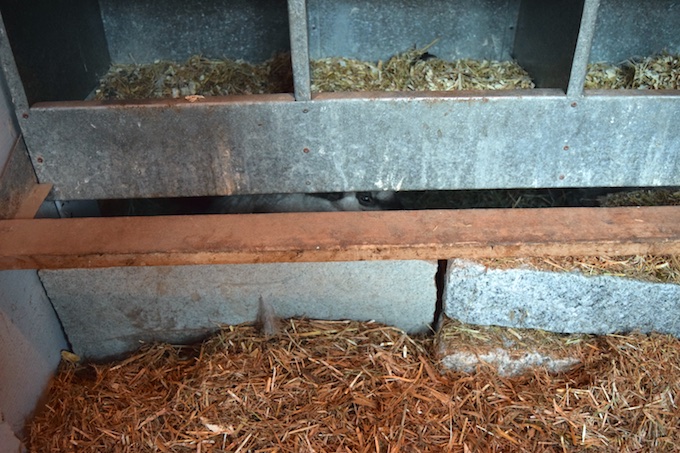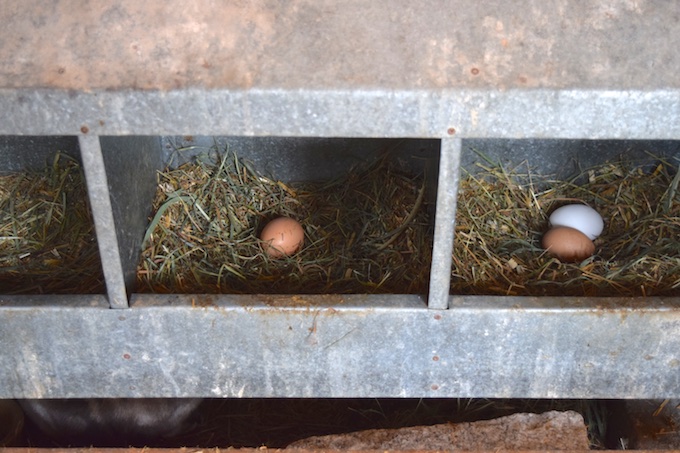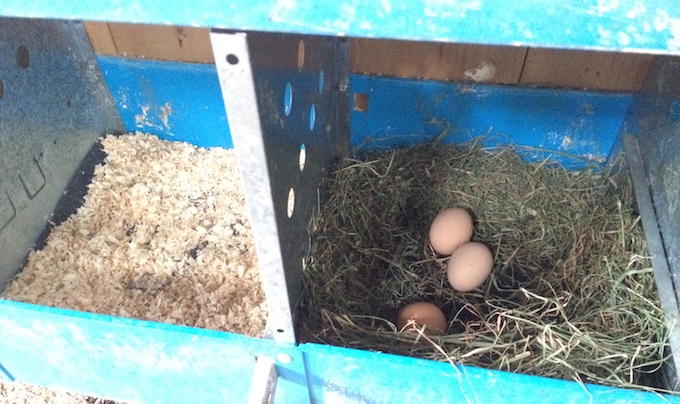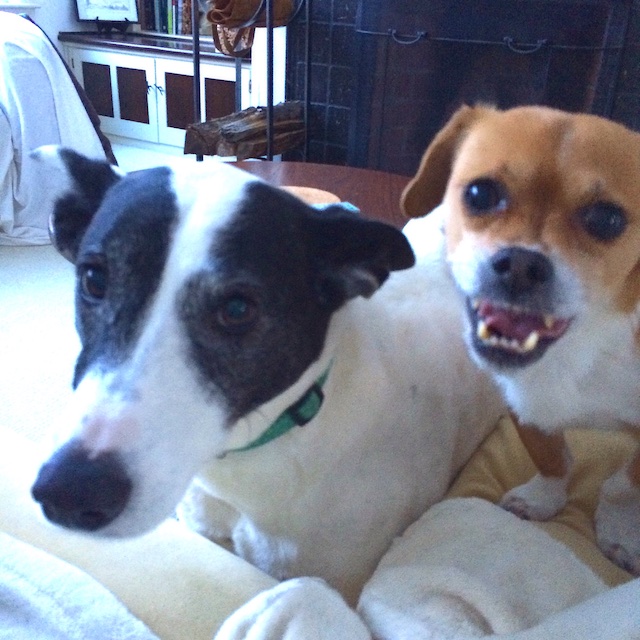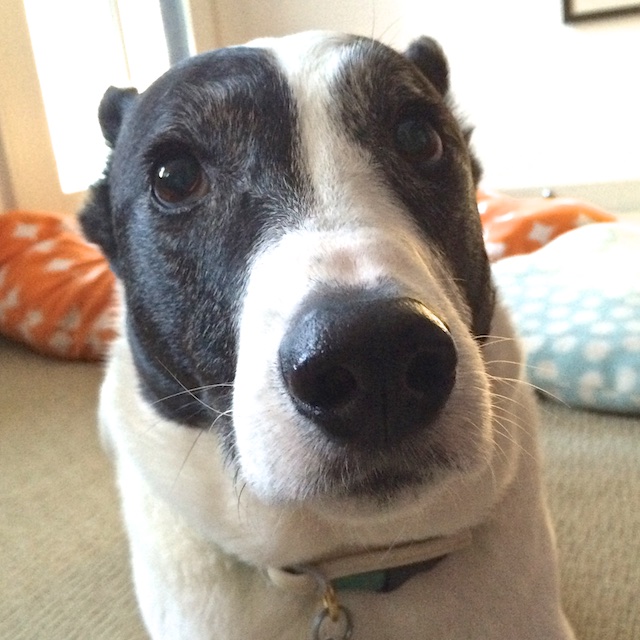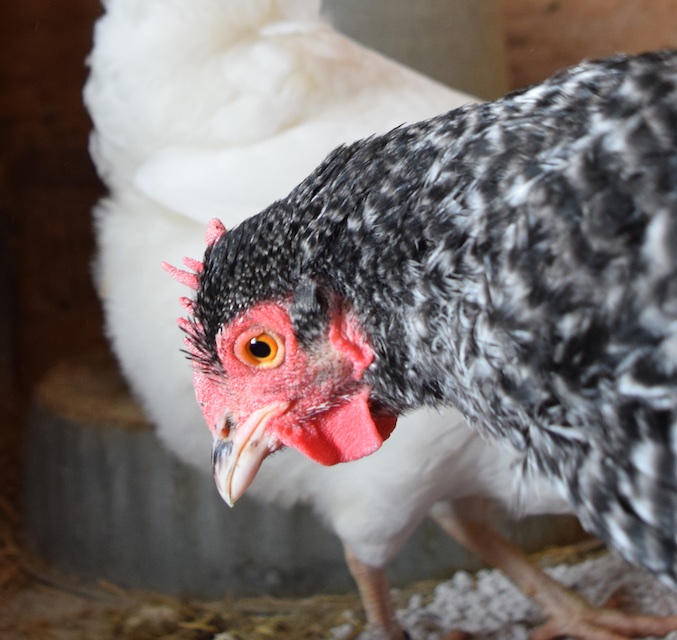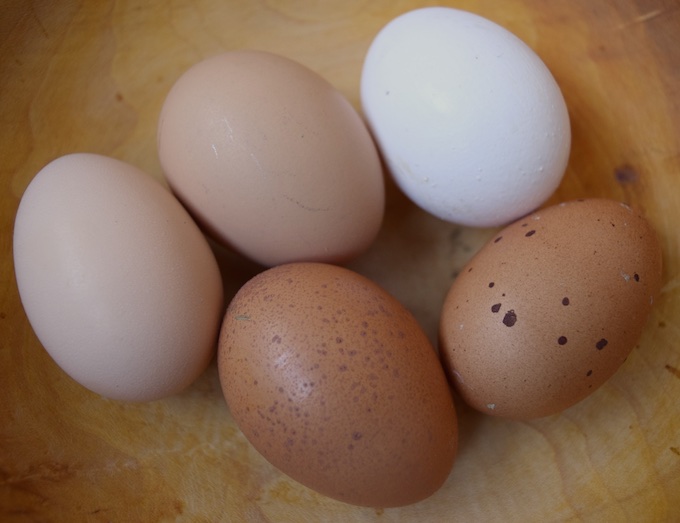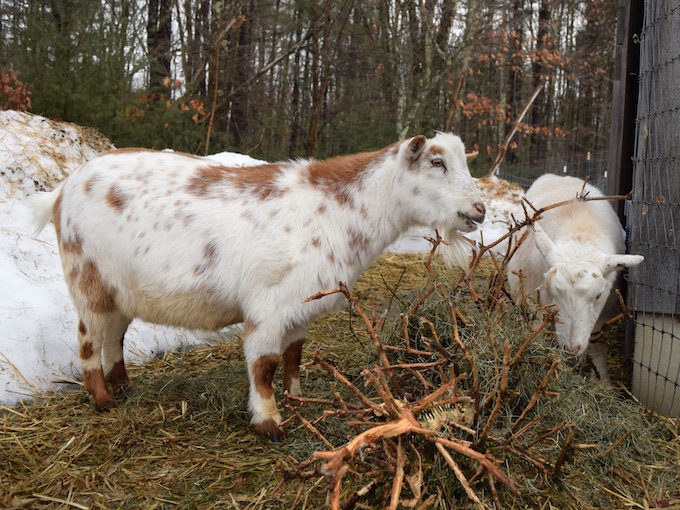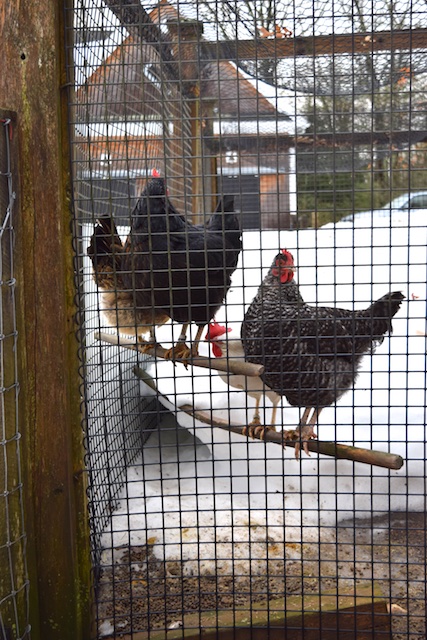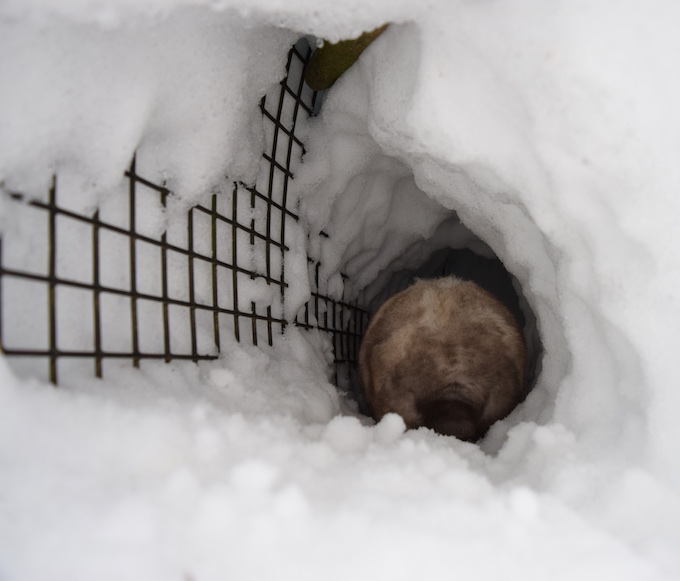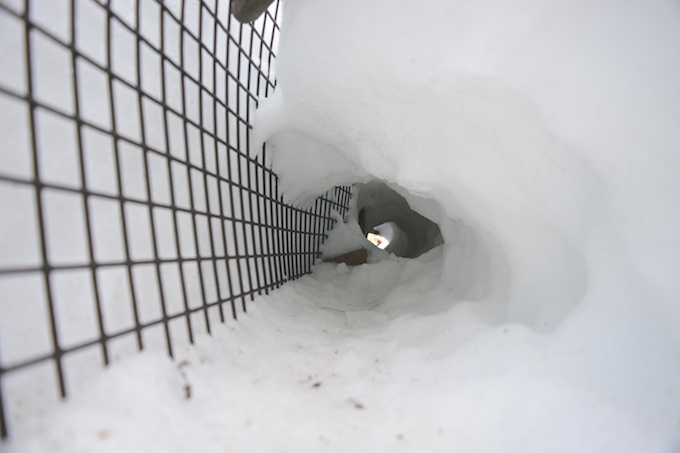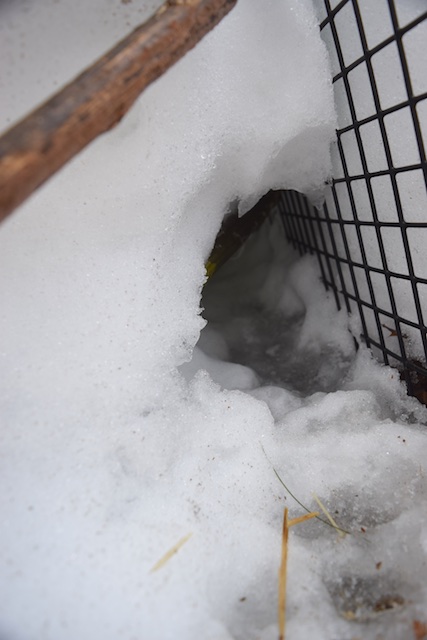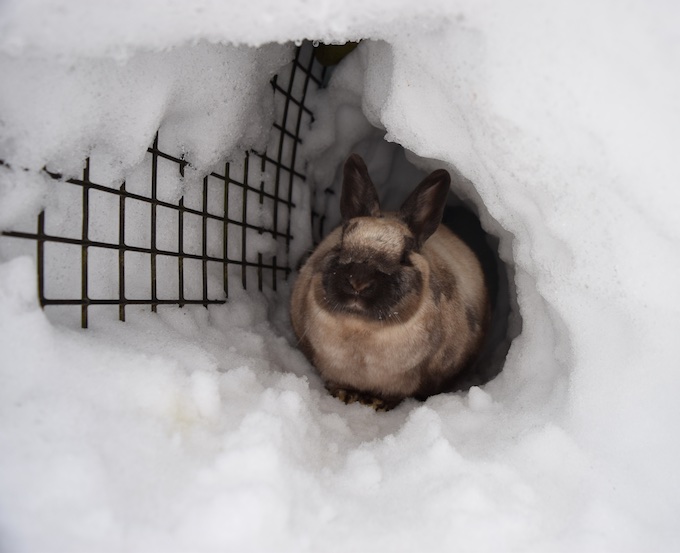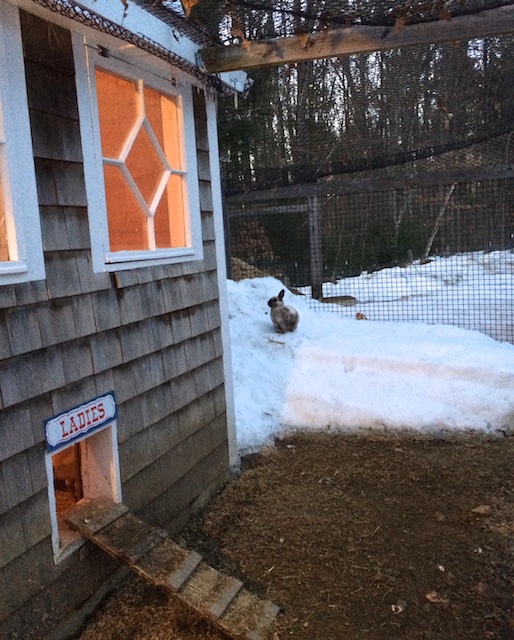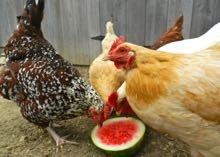For the last twenty years, I’ve used the same material in my chickens’ nesting boxes – pine shavings. They’re inexpensive, soft, absorbent and easily cleaned. The chickens can move them about to create the sort of depression that they like to settle down on. I once tried paper from my office shredding machine, but it stuck to the damp eggs. I don’t like straw because a) I don’t want to have to buy a bale and store it, and b) chicken manure gets stuck to it, and then the eggs get dirty. The same with hay.
However, just because I’ve done something for two decades, doesn’t mean that I’m not open to doing things differently when my animals tell me that a change is necessary.
Phoebe’s den is underneath the nesting boxes in the Little Barn. It’s where she sleeps at night and naps during the day. It’s her haven away from the antics of the chickens and their big feet. Her rabbit pellets are there, and her hay, which she fashions into a soft cushion, and nibbles on as well (yes, she eats in bed!) There are granite blocks that allow her access, but keep the chickens out. This set-up has worked perfectly for three years.
During this winter of the deep snow and the deep freeze, I provided Phoebe with extra hay. The hens noticed. Come February, when laying resumed, I found Phoebe in a corner of the coop, and Nancy Drew busily rearranging the rabbit’s den and turning it into her nesting box. I extracted the chicken and rearranged the blocks, thinking that I could keep a large, fat hen out of Phoebe’s place. Not so. Nancy squeezed back in.
I thought this through. What did the hen want? I guessed that it was the hay. I put some in one of the nesting boxes. Nancy, delighted not to have to deal with Phoebe, or wiggle her way into that den, hopped up and proceeded to lay where I wanted her to. Phoebe, with relief, had her place back.
Do you see Phoebe ensconced underneath? All is right with her world again.
So I tried an experiment in the Big Barn. There are five nesting boxes. I put hay in one. This is what I found the next day. Obviously, hens prefer hay.
I still believe in using pine shavings, and if I didn’t have a rabbit’s den of hay to protect, I wouldn’t use hay for the chickens. But, if you have difficulty getting your hens to lay in your nesting boxes, (perhaps you have one that lays on the floor, or hides her eggs in the run) try hay. Let me know how your girls like the change.
